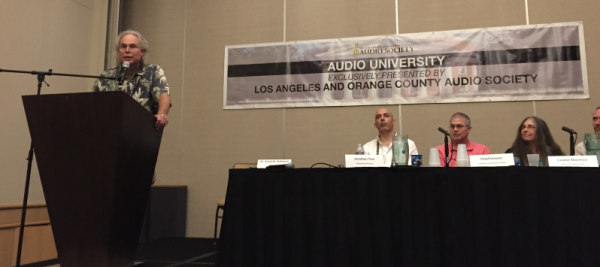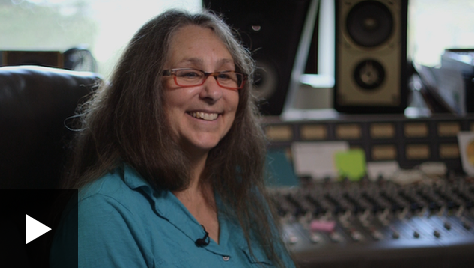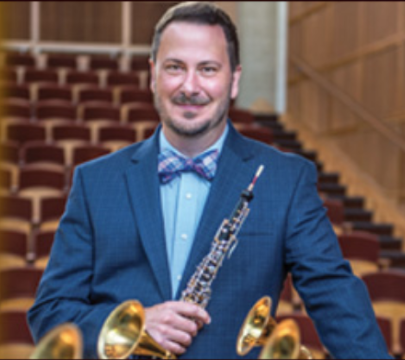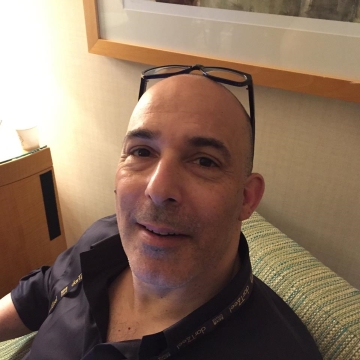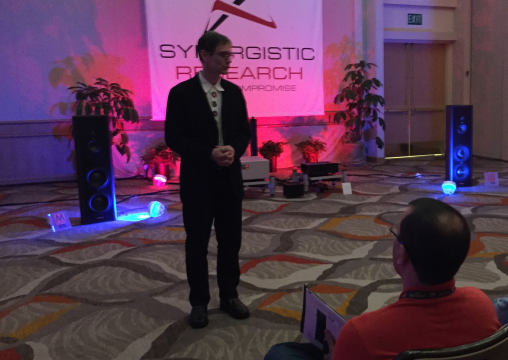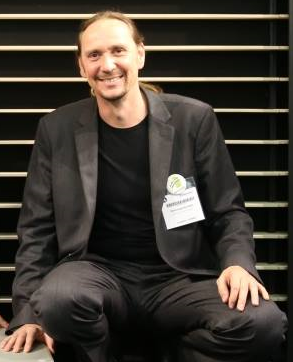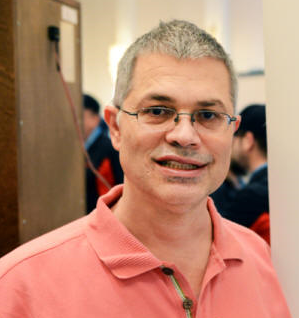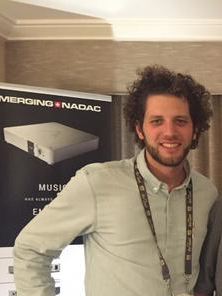You are reading the older HTML site
Positive Feedback ISSUE 79
The Show Newport 2015 DSD Panel
DSD Panel: David Robinson at the podium, Left to Right: Jonathan Tinn, Chad Kassem, Cookie Marenco and Dominique Brulhart (Photo: Jonas Sacks) The recent edition of The Show Newport was held at the Hotel Irvine and featured not only a host of audio exhibits and demonstrations, but also a series of seminars titled "Audio University". One of these sessions focused on the similarities between Single, Double, and Quad bit rate DSD and Analog Recording. The panelists have extensive experience with both Analog and DSD formats and discussed their experiences with these two formats. They included:
Attendees at the seminar also included a number of knowledgeable and well known figures in the audio industry. This included Ray Kimber of Kimber Kable and IsoMike, Fred Ainsley from Lampizator North America, Jonas Sacks from Native DSD.Com and a brief visit at the start of the seminar from Mark Waldrep of AIX Records. The premise of the panel was quite interesting since many people believe that all recording involves PCM digital software and equipment. That is clearly not the case among the members of this panel where Live to DSD and Analog Recording techniques are commonly used. Why DSD and Analog? David Robinson from Positive Feedback asked panelists why they record in DSD and Analog and how the two technologies relate and are converging.
Cookie Marenco, Blue Coast Music (Photo: Blue Coast Music) Cookie Marenco of Blue Coast Music told the audience that she records artists in an informal setting, almost like a rehearsal. She uses DSD and Analog Recording "because I like it, it sounds the best to me. I think my fans will like it too." Cookie noted that "DSD is our biggest seller" at Blue Coast Music, so the fans apparently do. Cookie said she works with artists who have the talent to record their music straight to DSD or Analog without the need for editing or tuning. She told the audience that not every artist can do this but she has worked in the music world long enough to know where to find musicians with this level of talent. Marenco records to DSD and then uses an Analog Mixing Board to set levels and add reverb before generating the final music downloads in Single and Double Rate DSD. The DSD files are also used to generate PCM downloads for sale in FLAC and in some cases WAV formats. Marenco said she was doing some experimenting with Quad Rate DSD using a HAPI system on loan from David Robinson.
Thom Moore, 5/4 Productions (Photo: 5/4 Productions) Thom Moore, the President of 5/4 Productions talked about that company's formation after Telarc Records was purchased by Concord Music Group and the Telarc recording staff created their own company. The Telarc recording staff started working with single rate DSD (DSD64) on a Sonoma DSD Workstation from Sony. After forming 5/4 they acquired a Pyramix system from Merging Technologies and made the first quad rate DSD (DSD256) recording in the world. Moore said 5/4 evaluated double rate DSD (DSD 128) but elected to "skip over it" and go right to quad rate recording after comparing the two formats. He told the audience "Quad DSD is just amazing". Today, Thom Moore, Michael Bishop and Rob Friedrich record a variety of artists and orchestras around the world. They record exclusively in DSD and use their expertise and proprietary systems to create other formats from the DSD recordings. Moore said that 5/4 can make a better sounding 24 bit, 96 kHz music file from the DSD master than if the recording was made in 24/96 in the first place. Moore also noted that 5/4 uses both DSD and Analog Recording systems and techniques. Some sessions can be recorded, balanced and mixed Live to DSD. Other sessions are recorded using Analog systems and are "printed to DSD" as the final step in the recording process. Moore views use and knowledge of Analog recording as an essential ingredient in their work.
Jonathan Tinn, Wave Kinetics (Photo: Dave Clark) Jonathan Tinn talked about his career in high end audio and his company's first Quad DSD recording. Tinn has worked for a number of well-known audio companies including EMM Labs, Blue Light Audio, Evolution Acoustics and Playback Designs. His most recent venture is Wave Kinetics Records which was formed to record and release an album of Debussy's Preludes, Books 1 and 2 by pianist Ilya Itin. Tinn described to the audience the difficulty in getting a recording like this made and his role in bringing it to reality. The upcoming recording was done by Thom Moore and the team at 5/4 Productions in Quad DSD and ½ inch Analog Tape. The album will be made available in several formats including a Vinyl LP made from the Analog Tape and Quad DSD music downloads from the Quad DSD master. Tinn also mentioned plans to record additional albums in Quad DSD, including one where Thom Moore from 5/4 Productions will step out of the recording booth to perform on the album. Selections from the album were being played in the Positive Feedback room in Quad DSD on the upcoming NADAC converter from Merging Technologies.
Bob Attiyeh, Yarlung Records (Photo: Jonas Sacks) Bob Attiyeh at Yarlung Records talked about the company's 10 Year Anniversary and their mission of recording and releasing music by young and very talented artists. He records Live to Analog Tape using a specially modified tape recorder. The music is then mastered with the Assistance of Mastering Engineer Steve Hoffman and made available on several formats including Analog Tape, Vinyl LP, CD and Music Downloads. Attiyeh credited his move into DSD to David Robinson. Robinson loaned him a Merging Technologies HAPI system that enabled Attiyeh to transfer 20 of his Yarlung Releases from Analog Tape to Quad Rate DSD over a 10 day period. Attiyeh also credited assistance from Native DSD Mastering Engineer Tom Caulfield in making this tape to DSD project a reality. Today, Yarlung probably has more Quad DSD albums on the market than any other record company. According to David Robinson, the Yarlung Quad DSD releases on Native DSD show how the Quad DSD format brings the listener the sound of the master tape itself. Developing DSD Recording Equipment & a New Home Audio DAC Dominique Brulhart, Head Software Engineer at Merging Technologies discussed Merging's role in the development and evolution of recording equipment for DSD. Merging worked with Philips and several record labels in the early days of SACD and DSD recording to develop a workstation that could record and handle single rate DSD (DSD64) sessions. Later, when the request came for double rate DSD (DSD128) came, Brulhart talked of rolling up his sleeves with his software team and spending over a year to bring double rate DSD to the Merging platform. The same happened again when interest in quad rate DSD (DSD256) recording arrived. Brulhart noted that each of these technologies was a key step in the evolution of DSD but each also involved extensive engineering and software which was quite time consuming and challenging.
Dominique Brulhart, Merging Technologies (Photo: Merging Technologies) Merging's most recent project has been the development of a Network Attached DAC for the home audio market known as the NADAC. Brulhart has been deeply involved in the NADAC project, serving as its product manager. Requests for a home audio DAC have been made to Merging for some time now from the recording professionals who use Merging equipment and software in the creation of recordings. Brulhart told the audience that NADAC is the culmination of 2 years of work in creating a DAC that has the same quality of converters for DSD, DXD and PCM in the recording world to home audio. NADAC is unique in several areas. It does not have a USB input at all. Instead NADAC uses a ruggedized Ethernet connection with the professional Ravenna protocol which Merging says enables the DAC to control the transmission of music to the unit and to reach very high levels of data accuracy. This approach also enables long runs of Ethernet cable to be used to connect the system. NADAC will come with ASIO and Core Audio over Ethernet software which will enable many of today's music software playback programs to work as is. The NADAC is being shown at The Show Newport in both Multichannel and Stereo playback setups and has received some very positive comments. The product is slated to ship in July for $9,000 (2 Channel Stereo model) and $10,000 (8 Channel Multichannel model). This will be a DAC to keep your eye on in the months ahead. Licensing Classic Recordings for Release on SACD and DSD Chad Kassem, owner of the Super HiRez.Com music downloads site, Analogue Productions and Acoustic Sounds talked about the world of licensing classic pop, jazz and blues recordings for remastering and release on SACD and DSD. Kassem announced that Super HiRez now offers over 500 DSD Downloads which remain a popular part of his company's business. The DSD Downloads were launched after requests and customer feedback, including a DSD panel such as this one according to Kassem.
Chad Kassem, Super HiRez and Acoustic Sounds (Photo: David Robinson) Kassem also discussed the long process involved in licensing classic recordings. He said it is very time consuming and can be difficult. As a result, SACD and DSD releases don't come out as often as music fans would like. But, Kassem says, we keep working to get more. As part of that process, Kassem related a funny story involving a young executive at Sony Music. When requesting a license from Sony Music for some classic albums, Kassem indicated they would be for SACD and DSD Download release on his web site. When the young exec asked "What is SACD and DSD?" Kassem replied "You (Sony) invented it" followed by a tutorial on what SACD and DSD is all about. Kassem also talked about the economics of SACD and DSD Download releases. He noted that music downloads opens up an interesting option. In some cases, a full SACD release may not pencil out, but a release of the music as a DSD Download will. So there are cases where the album comes out that way (as a download) vs. as an SACD. An Update from Native DSD Moderator David Robinson spotted Jonas Sacks, Co-Founder and Technical Director of Native DSD.Com in the audience and asked him to provide the audience with an update on their DSD Download site and Hardware Store. Sacks said that Native DSD.Com web store offers over 540 DSD Downloads (as of the date of The Show Newport) in Stereo DSD with most of these albums (80%) also being available in Multichannel DSD.
Jonas Sacks, Native DSD (Photo: Brian Moura) Native DSD is adding 5 to 10 new DSD downloads to their web store each week with recent additions including their first DSD Download from Linn Records and a newly recorded Quad DSD release of the Bach Cello Suites on the Navis Classis record label. Sacks said Native DSD has had success selling double rate (DSD128) and quad rate DSD (DSD256) downloads as well as the original single rate (DSD64) format. Questions from the Audience After the panel had a chance to discuss their backgrounds and role in the recording world, it was time to take questions from the audience. Here are some of the highlights from those discussions. One audience member said he was confused by comments made during two earlier Audio University panels at The Show Newport. On one panel, a speaker asserted that PCM digital sounds superior to Analog. During a second panel, a presenter said that Analog was "not High Resolution Audio" like 24 bit, 96 kHz PCM digital and that analog is really "14 bit" resolution sound. The DSD and Analog Panel had a different take on the comments noting that they enjoyed both Analog and DSD sources and find both to be High Resolution Audio. Another question involved Meridian's new MQA (master quality audio) system of encoding and then decoding high resolution audio to work with CD Quality streaming systems. Dominique Brulhart of Merging Technologies questioned how MQA could claim to deliver "master quality" audio since it uses lossy processing on the recording. Thom Moore of 5/4 Productions said he viewed MQA as "a distraction" from the goal everyone should be focusing on, namely producing and delivering High Resolution Audio to the listener. Moderator David Robinson sees MQA as part of the world of streaming audio and not really part of the discussion of High Resolution Audio. An audience member asked if Super Audio CDs (SACDs) have a future. Chad Kassem of Acoustic Sounds said "If they weren't selling, we wouldn't be doing them." Kassem noted that the 5.1 Multichannel SACD of Wish You Were Here by Pink Floyd has sold over 40,000 copies to date. He said that the success of that SACD reissue led to interest in additional SACDs from Pink Floyd band members including the upcoming 5.1 Multichannel SACD of Amused to Death by Roger Waters which is scheduled for release on July 24. Wrapping Up The session on DSD and Analog: The Great Convergence at The Show Newport was a very informative and interesting session. While not as contentious as some of the earlier sessions on the Audio University schedule, it answered many questions of the attendees. It is also worth noting that members of the panel and audience engaged in additional discussions after the session, showing the high level of expertise of the panel and the interest in the topic by the attendees. All in all, a job well done.
|


